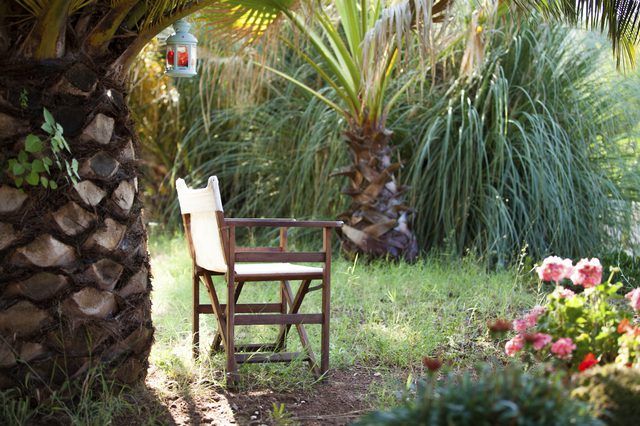Bulbs
Flower Basics
Flower Beds & Specialty Gardens
Flower Garden
Garden Furniture
Garden Gnomes
Garden Seeds
Garden Sheds
Garden Statues
Garden Tools & Supplies
Gardening Basics
Green & Organic
Groundcovers & Vines
Growing Annuals
Growing Basil
Growing Beans
Growing Berries
Growing Blueberries
Growing Cactus
Growing Corn
Growing Cotton
Growing Edibles
Growing Flowers
Growing Garlic
Growing Grapes
Growing Grass
Growing Herbs
Growing Jasmine
Growing Mint
Growing Mushrooms
Orchids
Growing Peanuts
Growing Perennials
Growing Plants
Growing Rosemary
Growing Roses
Growing Strawberries
Growing Sunflowers
Growing Thyme
Growing Tomatoes
Growing Tulips
Growing Vegetables
Herb Basics
Herb Garden
Indoor Growing
Landscaping Basics
Landscaping Patios
Landscaping Plants
Landscaping Shrubs
Landscaping Trees
Landscaping Walks & Pathways
Lawn Basics
Lawn Maintenance
Lawn Mowers
Lawn Ornaments
Lawn Planting
Lawn Tools
Outdoor Growing
Overall Landscape Planning
Pests, Weeds & Problems
Plant Basics
Rock Garden
Rose Garden
Shrubs
Soil
Specialty Gardens
Trees
Vegetable Garden
Yard Maintenance
Creating a Tropical Garden
Create a tropical effect in any region by mixing dense, leafy foliage plants, flowering vines and splashy blossoms, selecting plants that thrive in your area.

You don't have to live in Bali -- or even a toasty climate -- to create a tropical garden in your backyard. Creating a tropical garden is more a matter of selecting and arranging plants that grow well in your region than duplicating the exact plants you find in the tropics. Think dense layering of leafy plants to create vertical texture and "jungle" feel; think tropical-looking vines and large blossoms in brilliant and dramatic colors.
Dense Leafy Vegetation
Foliage plants are the backbone of the tropical garden, and you'll want a dense and vertical grouping. You should not bring in plants that yell "South Pacific" but will have a hard time acclimating to your area. Instead, the secret is to choose plants that thrive in your type of soil and your hardiness zone. Use anything with palm-shaped leaves or large, in-your-face leaves to create the backbone of your tropical garden. You'll need some taller plants to create a green-walled look, with shorter plants in front. Consider some tropical lookalikes:
Hardy fiber bananas (Musa basjoo) U.S. Department of Agriculture plant hardiness zones 5 through 11
'Fragrant Bouquet' hosta (Hosta fortunei 'Fragrant Bouquet') USDA zones 3 through 8
'Earth Angel' hosta (Hosta 'Earth Angel') USDA zones 3 through 8
'Ivory Coast' elephant ears (Alocasia 'Ivory Coast') USDA zones 9 through 11
Atlas mountain palm (Chamaerops humilis var. cerifera) USDA zones 8 through 11
Vines for Foliage and Flower
A carefully chosen vine works well in a tropical garden to add both leafy foliage and brilliant flowers. A few vines to think about:
'Barbara Karst' bougainvillea (Bougainvillea 'Barbara Karst') is a showy vine with bright magenta flowers that grows in USDA zones 9 through 11.
Blue passion vine (Passiflora caerulea) grows quickly and vigorously with ornate, fragrant blue blossoms in USDA zones 6 through 10.
Crimson jewel mandevilla (Mandevilla x amabilis 'Magic Dream') produces trumpet-shaped flowers in crimson jewel-tones in USDA zones 10 through 11.
Planting a Vine
You can grow some vines in containers, but a heavy vine may be better off planted solidly in the ground. Planting in a container means you can more easily move the plant indoors for winter in cooler climates, bringing your tropical garden inside. Select a tropical-style vine appropriate for your soil, sun exposure and hardiness zone to plant in the ground. Put in a support structure before you dig to plant the vine.
Things You'll Need
Shovel
Organic mulch
Vine twine
Step 1
Work the soil in the area you intend to plant your vine about 12 inches from the support structure. Dig it out to about 18 inches, removing weeds and rocks. Spread a 3-inch layer of compost over the soil, then mix it into the top 6 to 12 inches of soil. Once this is done, shovel out a planting hole in the worked soil about three times the width of the container.
Step 2
Squeeze the vine's container slightly to loosen the plant's root ball and soil and remove it in one piece. Place the root ball in the planting hole deep enough that the area where the roots and stems join is a few inches below the soil surface. It should be at the same depth it was in the container, with the soil from the container even with the soil in your garden. Angle the vine a little so that it is leaning slightly toward the support.
Step 3
Replace the removed soil into the spaces around the vine's root ball, pressing the soil into place. Water the area generously. Layer a few inches of organic mulch over the root area to hold in moisture and keep down weeds, keeping the mulch a few inches away from the vine's stems. Over the next few months, continue to water enough to keep the soil moist but not wet. As the plant grows, direct it toward the support structure and attach it, if necessary, with vine twine.
Big, Vibrant Blossoms
Plants with bright, show-stopping blossoms have that tropical look. The plants themselves need not be tropical -- it is the contrast of the bright splashes of color against a backdrop of layered leafy foliage that creates a tropical allure. The best flower choices for topical gardens offer extra-large, bright flowers with a sweet fragrance. Only pick those that grow in your hardiness zone.
'Brilliant' hibiscus (Hibiscus rosa-sinensis 'Brilliant') is a 10-foot leafy plant with large, burning red flowers in USDA zones 10 through 11.
Bird of paradise (Strelitzia reginae) has tropical foliage and orange and blue "bird head" blossoms in USDA zones 9 through 11.
'Bengal Tiger' canna (Canna x generalis 'Bengal Tiger') has large orange blossoms among 6-foot leaves in USDA zones 7 through 11.